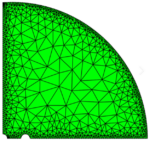You are currently viewing SemiWiki as a guest which gives you limited access to the site. To view blog comments and experience other SemiWiki features you must be a registered member. Registration is fast, simple, and absolutely free so please,
join our community today!
WP_Term Object
(
[term_id] => 6435
[name] => AI
[slug] => artificial-intelligence
[term_group] => 0
[term_taxonomy_id] => 6435
[taxonomy] => category
[description] => Artificial Intelligence
[parent] => 0
[count] => 754
[filter] => raw
[cat_ID] => 6435
[category_count] => 754
[category_description] => Artificial Intelligence
[cat_name] => AI
[category_nicename] => artificial-intelligence
[category_parent] => 0
[is_post] =>
)
Jay Dawani is the co-founder and CEO at Lemurian Labs, a startup developing an accelerated computing platform tailored specifically for AI applications. The platform breaks through the hardware barriers to make AI development faster, cheaper, more sustainable, and accessible to more than just a few companies.
Prior to founding… Read More
We have been working with Keysight EDA for the past two years and it has been an honor. The technical depth we have reached with them is impressive. Niels Faché, VP & GM, Keysight EDA, is responsible for Keysight’s design and simulation portfolio. Niels has been part of the Keysight-Agilent-HP family since 1994 when HP acquired… Read More
For observers of EDA markets there is an easily overlooked opportunity for new growth. Today around 50% of EDA revenues come from systems rather than semiconductor companies, from datacenters to automotive, aerospace, energy, and others. In most of these industries total system design depends as much on mechanical and other… Read More
The web is a wonderful place to find information on almost any topic. While top-level information is easy to find, a deep dive often requires the services of a market research firm. These organizations specialize in “going deep” on many technology topics, offering insights not available with a Google search. And these services… Read More
As usual in January we start with a look back at the papers we reviewed last year. Paul Cunningham (GM, Verification at Cadence), Raúl Camposano (Silicon Catalyst, entrepreneur, former Synopsys CTO and now Silvaco CTO) and I continue our series on research ideas. As always, feedback welcome. We’re planning on starting a live series… Read More
Finite element methods for analysis crop up in many domains in electronic system design: mechanical stress analysis in multi-die systems, thermal analysis as a counterpart to both cooling and stress analysis (eg warping) and electromagnetic compliance analysis. (Computational fluid dynamics – CFD – is a different beast which… Read More
This is our third year working with Sondrel and it has been a great experience. I have always been fascinated with the ASIC business and put a full chapter about it in our first book “Fabless: The Transformation of the Semiconductor industry.” Companies like Sondrel enabled our move to the fabless model and now they … Read More
CES 2024 is being held this week in Las Vegas, Nevada with an estimated 130,000 attendees and over 4,000 exhibitors. CES (previously Consumer Electronics Show) has been held in Las Vegas every year since 1978, except for 2021 due to COVID-19. This was my ninth CES representing Semiconductor Intelligence, with the first in 2012.… Read More
As semiconductor industry folks know, Synopsys is a behemoth of a company. At $5.84B in FY2023 revenue (FY Nov-Oct), approximately 20,000 employees and a market cap of about $74B, it leads the silicon-to-systems design solutions space within the industry. From humble beginnings in 1986 as a disruptive startup, the company has… Read More
Stepping into the year 2024, the landscape of artificial intelligence (AI) continues to evolve at an unprecedented pace, presenting both exciting opportunities and formidable challenges. In this era of technological advancement, we find ourselves at the intersection of innovation and responsibility, where emerging trends
…
Read More












Quantum Computing Technologies and Challenges